| Listing 1 - 10 of 24 | << page >> |
Sort by
|
Book
ISBN: 0122060903 1322477604 1483275612 Year: 1990 Volume: 9 Publisher: London : Academic press,
Abstract | Keywords | Export | Availability | Bookmark
 Loading...
Loading...Choose an application
- Reference Manager
- EndNote
- RefWorks (Direct export to RefWorks)
Computer vision --- Vision par ordinateur --- Computer vision.
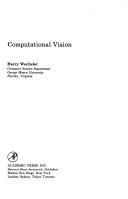
ISBN: 012741245X 1322480346 1483294595 9780127412450 Year: 1990 Volume: vol *4 Publisher: Boston: Academic press,
Abstract | Keywords | Export | Availability | Bookmark
 Loading...
Loading...Choose an application
- Reference Manager
- EndNote
- RefWorks (Direct export to RefWorks)
Computer vision --- Computervisie --- Vision par ordinateur --- Computer vision.
Book
ISBN: 3540973028 0387973028 9783540973027 9780387973029 Year: 1990 Publisher: New York (N.Y.) : Springer,
Abstract | Keywords | Export | Availability | Bookmark
 Loading...
Loading...Choose an application
- Reference Manager
- EndNote
- RefWorks (Direct export to RefWorks)
Book
Year: 1990 Publisher: New York Berlin Tokyo Springer Verlag
Abstract | Keywords | Export | Availability | Bookmark
 Loading...
Loading...Choose an application
- Reference Manager
- EndNote
- RefWorks (Direct export to RefWorks)
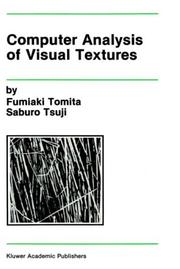
ISBN: 0792391144 Year: 1990 Publisher: Boston (Mass.) : Kluwer,
Abstract | Keywords | Export | Availability | Bookmark
 Loading...
Loading...Choose an application
- Reference Manager
- EndNote
- RefWorks (Direct export to RefWorks)
Artificial intelligence --- Computer vision --- Visual texture recognition --- Artificial intelligence. --- Computer vision. --- Visual texture recognition.
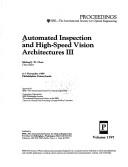
ISBN: 0819402362 Year: 1990 Publisher: Bellingham : International society for optical engineering,
Abstract | Keywords | Export | Availability | Bookmark
 Loading...
Loading...Choose an application
- Reference Manager
- EndNote
- RefWorks (Direct export to RefWorks)
Computer vision --- Quality control --- Congresses. --- Optical methods --- Automation
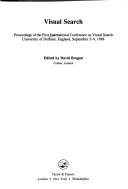
ISBN: 0850667739 Year: 1990 Publisher: London Taylor and Francis
Abstract | Keywords | Export | Availability | Bookmark
 Loading...
Loading...Choose an application
- Reference Manager
- EndNote
- RefWorks (Direct export to RefWorks)
Computer vision --- Vision --- Visual perception --- Artificial Intelligence --- Vision, Ocular --- Visual Perception --- Congresses --- physiology
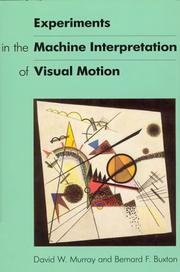
ISBN: 026213263X Year: 1990 Publisher: Cambridge (Mass.) : MIT press,
Abstract | Keywords | Export | Availability | Bookmark
 Loading...
Loading...Choose an application
- Reference Manager
- EndNote
- RefWorks (Direct export to RefWorks)
Computer vision --- Motion perception (Vision) --- Movement perception (Vision) --- Speed perception --- Movement, Psychology of --- Vision --- Visual perception --- Machine vision --- Vision, Computer --- Artificial intelligence --- Image processing --- Pattern recognition systems --- Computer vision. --- Motion perception (Vision).
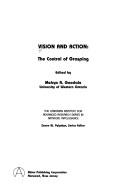
ISBN: 0585218889 9780585218885 0893915548 9780893915544 Year: 1990 Publisher: Norwood, N.J. Ablex
Abstract | Keywords | Export | Availability | Bookmark
 Loading...
Loading...Choose an application
- Reference Manager
- EndNote
- RefWorks (Direct export to RefWorks)
Hand. --- Vision. --- Robot wrists. --- Robot vision. --- Robot vision systems --- Vision, Robot --- Computer vision --- Wrists, Robot --- Robotics --- Eyesight --- Seeing --- Sight --- Senses and sensation --- Blindfolds --- Eye --- Physiological optics --- Hands --- Paw --- Paws --- Arm --- Left- and right-handedness --- Hand --- Vision

ISBN: 9780262280372 0585354049 9780585354040 026228037X 9780262528160 026213263X 9780262132633 Year: 1990 Publisher: Cambridge, Mass. : MIT Press,
Abstract | Keywords | Export | Availability | Bookmark
 Loading...
Loading...Choose an application
- Reference Manager
- EndNote
- RefWorks (Direct export to RefWorks)
If robots are to act intelligently in everyday environments, they must have a perception of motion and its consequences. This book describes experimental advances made in the interpretation of visual motion over the last few years that have moved researchers closer to emulating the way in which we recover information about the surrounding world. It describes algorithms that form a complete, implemented, and tested system developed by the authors to measure two-dimensional motion in an image sequence, then to compute three-dimensional structure and motion, and finally to recognize the moving objects. The authors develop algorithms to interpret visual motion around four principal constraints. The first and simplest allows the scene structure to be recovered on a pointwise basis. The second constrains the scene to a set of connected straight edges. The third makes the transition between edge and surface representations by demanding that the wireframe recovered is strictly polyhedral. And the final constraint assumes that the scene is comprised of planar surfaces, and recovers them directly. David W. Murray is University Lecturer in Engineering Science at the University of Oxford and Draper's Fellow in Robotics at St Anne's College, Oxford. Bernard F. Buxton is Senior Research Fellow at the General Electric Company's Hirst Research Centre, Wembley, UK, where he leads the Computer Vision Group in the Long Range Research Laboratory. Contents: Image, Scene, and Motion. Computing Image Motion. Structure from Motion of Points. The Structure and Motion of Edges. From Edges to Surfaces. Structure and Motion of Planes. Visual Motion Segmentation. Matching to Edge Models. Matching to Planar Surfaces.
Computer vision. --- Machine vision --- Vision, Computer --- Artificial intelligence --- Image processing --- Pattern recognition systems --- Motion perception (Vision) --- COMPUTER SCIENCE/Artificial Intelligence --- Movement perception (Vision) --- Speed perception --- Movement, Psychology of --- Vision --- Visual perception
| Listing 1 - 10 of 24 | << page >> |
Sort by
|

 Search
Search Feedback
Feedback About UniCat
About UniCat  Help
Help News
News